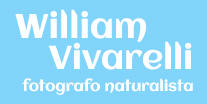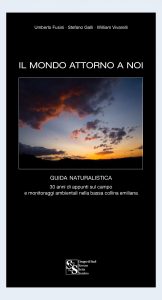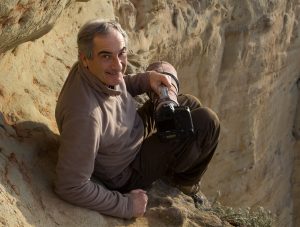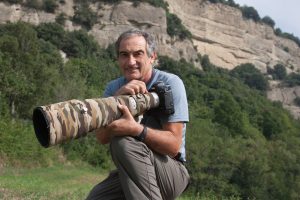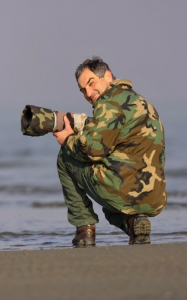biografia


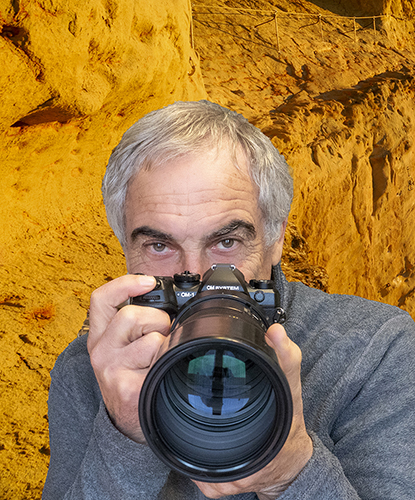
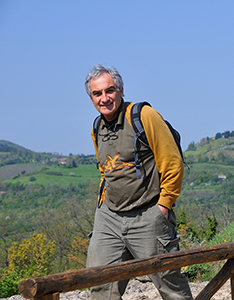
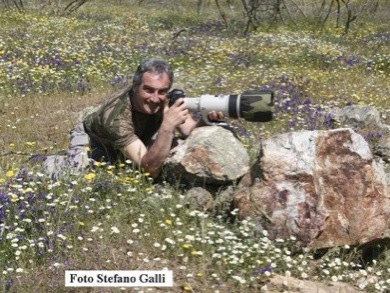 William Vivarelli nasce a Granarolo Emilia il 28 luglio del 1949, paese della “bassa” bolognese che lascerà nel ’79 per trasferirsi in quello che allora era un piccolo comune immerso nel verde delle colline bolognesi, Pianoro.
William Vivarelli nasce a Granarolo Emilia il 28 luglio del 1949, paese della “bassa” bolognese che lascerà nel ’79 per trasferirsi in quello che allora era un piccolo comune immerso nel verde delle colline bolognesi, Pianoro.
Professionalmente si dedica dal “71” alla fotografia “industriale” e pubblicitaria. Il suo grande amore per le immagini, unito alla passione di sempre, quella per la Natura, a partire dalla metà degli anni “80” lo portano a ritrarre in modo assiduo e costante: fauna, flora e ambienti emiliano/romagnoli.
Dalle centinaia di diapositive che mano a mano inizia ad accumulare, prendono vita i primi poster divulgativi e con essi la consapevolezza della necessità di una maggiore tutela e valorizzazione del Territorio pianorese.
Insieme ad un gruppo di amici fonda ne “91 la sezione L.I.P.U. di Pianoro, nella quale ricopre il ruolo di “delegato” iniziando così “ufficialmente” una serie di iniziative volte ad un maggior coinvolgimento e sensibilizzazione dei propri concittadini sulle tematiche ambientaliste.
Il 2000 segna il suo incontro con la fotografia digitale. Il confronto con quella analogica non regge e lo spinge a sospendere la produzione di immagini naturalistiche per dedicarsi, in attesa di una soddisfacente evoluzione delle apparecchiature fotografiche non da studio, alla creazione di documentari naturalistici. Tra i suoi committenti vi sono: il Centro Anfibi di Pianoro, la Provincia di Bologna e la Regione Emilia Romagna; con la quale si aggiudicherà il 2° posto in un importante concorso mondiale.
A partire dal Novembre 2004, con la comparsa sul mercato delle reflex di ultima generazione, è tornato a scattare tra le zone umide della Pianura Padana, i boschi e gli incolti collinari… fino alle cime della Dorsale appenninica e questo sito, attraverso le immagini che raccoglie, vuole essere a loro un tributo…
 Da sempre nutro la passione per la natura e fin da piccolo, vivendo in campagna, ne ho sempre ammirato le bellezze. Dagli anni “80 ho cominciato a scoprire il mondo della fotografia naturalistica e da subito ne sono rimasto affascinato. Ho subito capito che mescolando natura e fotografia ne sarebbe uscita una cosa unica e meravigliosa.
Da sempre nutro la passione per la natura e fin da piccolo, vivendo in campagna, ne ho sempre ammirato le bellezze. Dagli anni “80 ho cominciato a scoprire il mondo della fotografia naturalistica e da subito ne sono rimasto affascinato. Ho subito capito che mescolando natura e fotografia ne sarebbe uscita una cosa unica e meravigliosa.
Osservare la luce, e i suoi effetti. Osservare gli animali, e i suoi comportamenti. Fondere entrambi nel mio modo di vedere le cose, è questo quello che più mi appassiona.
Ancora oggi, dopo migliaia di scatti, mi accorgo che anche dietro casa ci sono realtà infinite da scoprire e mille modi diversi di rappresentarle. L’uso della fotocamera mi ha da sempre stimolato all’osservazione
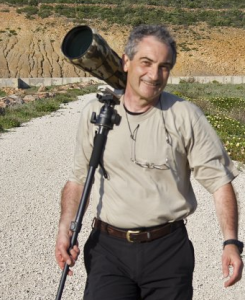 passo quasi totalmente il mio tempo libero in mezzo alla natura ad ammirarne la sue bellezza. La mia speranza è quella di riuscire, con la mia passione, ad incuriosire e a trasmettere le mie emozioni a coloro che mi stanno vicino, facendo scoprire loro le infinite bellezze che caratterizzano la natura e sensibilizzandoli nei confronti di una ricchezza che stiamo velocemente distruggendo.
passo quasi totalmente il mio tempo libero in mezzo alla natura ad ammirarne la sue bellezza. La mia speranza è quella di riuscire, con la mia passione, ad incuriosire e a trasmettere le mie emozioni a coloro che mi stanno vicino, facendo scoprire loro le infinite bellezze che caratterizzano la natura e sensibilizzandoli nei confronti di una ricchezza che stiamo velocemente distruggendo.
Si deve conoscere bene caratteristiche, abitudini e comportamenti del soggetto che si vuole riprendere, per innanzitutto trovarlo, per riuscire ad avvicinarlo e infine per “immortalarlo” nel suo essere quotidiano senza arrecargli il minimo disturbo.Quello che vorrei imprimere indelebilmente nella vostra memoria è di non effettuare riprese sui nidi

William Vivarelli was born at Granarolo Emilia, a village in the low-lying part of Bologna county, on July 28th, 1949. In 1979 he left Granarolo and moved to Pianoro, which was then a village nestling in the hills to the south of Bologna.In his professional life, since 1971 he has specialized in industrial photography and also in photography in advertising. From the middle of the 1980’s, his love of photography, combined with a consuming passion for nature, has led him to portray fauna, flora and areas of outstanding natural interest in Emilia Romagna.From the hundreds of slides that he gradually began to accumulate, he created a series of posters on specific flora and fauna, aimed to increase popular awareness of the environment around Pianoro.Along with a group of friends, in 1991 he founded the Pianoro section of LIPU (“Lega Italiana per la Protezione di Uccelli”), and has remained the Pianoro delegate of the organization. In this context he has promoted a series of initiatives aimed at increasing the involvement and awareness of his fellow citizens in environmental issues.In 2000 he began testing digital photography. The comparison with analogue was not satisfactory and this induced him to cease nature photography, until the evolution of satisfactory equipment for use outdoors, and start making nature documentaries. Among his clients are: the Amphibian Centre of Pianoro, the Province of Bologna and the Region of Emilia Romagna. He has represented the latter in a major world competition, winning 2nd place.Since November 2004, with the appearance on the market of the latest generation of reflex, he has returned to shoot in the wetlands of the Po valley, the woods and the wilder parts of the hills, up to the peaks along the Apennine watershed. This site is intended as a tribute to these places.
I have always had a passion for nature and as a child, living in the country, I have always admired its beauty. Since the 1980’s I began to discover the world of nature photography and quickly became fascinated. I realized that such a combination – nature and photography – could be both creative and educational.
Observing the light and its effects. Observing animals and their behaviour. Fuse them both in my eyes and create something that lasts – that is my prime objective.
Even today, after thousands of shots, I realize that just nearby there are fascinating things to be discovered and a thousand different ways to portray them.
I spend nearly all my free time immersed in nature, admiring its beauty. My one hope is to convey these feelings to those around me, helping them to discover the myriad charms that characterize nature and making them aware that this is something that we are rapidly destroying.
You must be very familiar with the habits and behaviour of the subject that you want to photograph so as first to find it, then to approach it, and finally to “capture” it in the context of its daily life without causing the least bother. It is important though to remember never to film nests.

